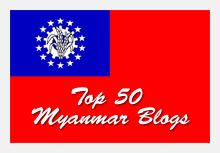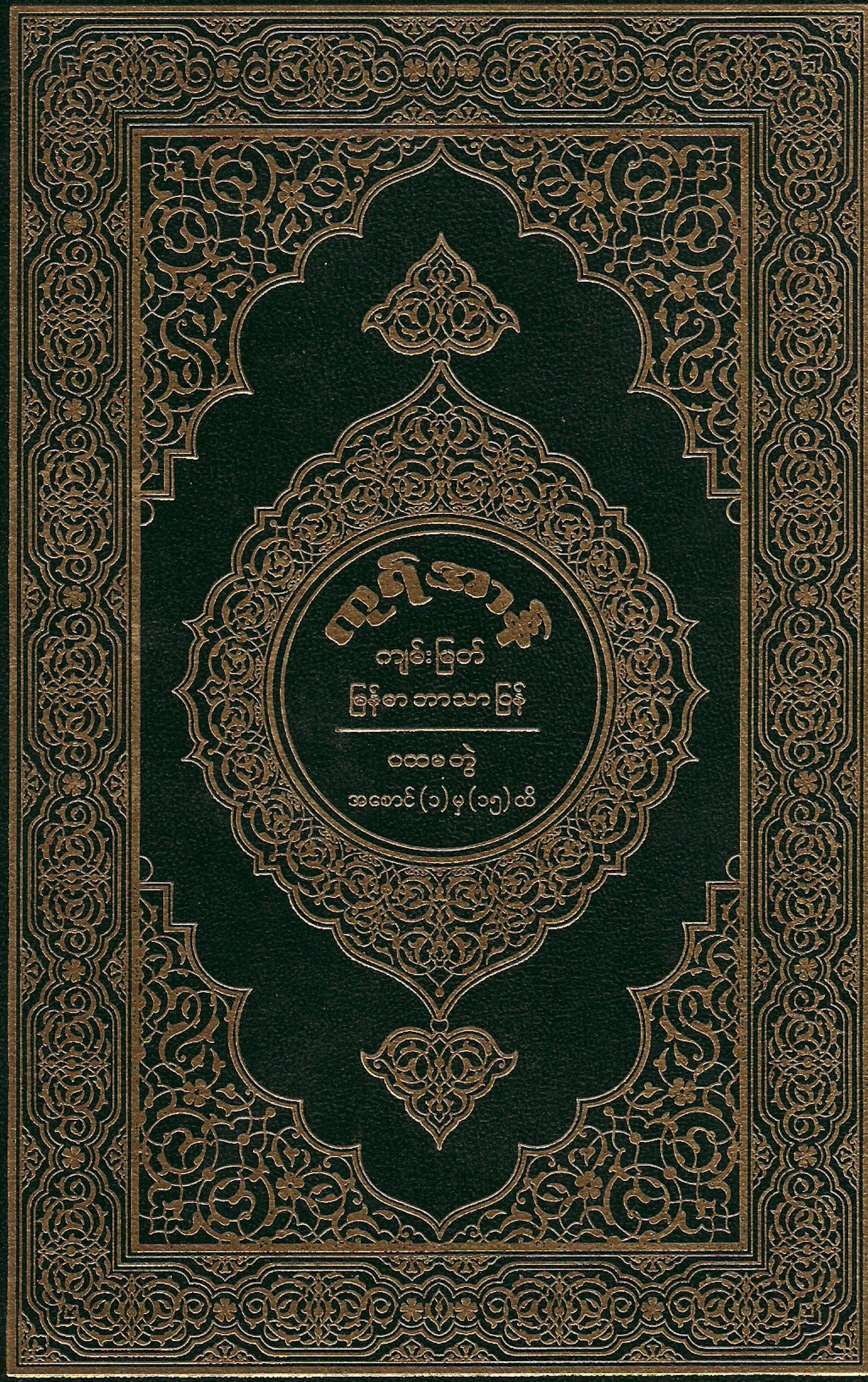Myanmar’s Muslim sideshow
(Note: This was an old article before latest real Monks protests. The monks reported in this article are Military Intelligent Agents, disguised as monks)
By Cem Ozturk
Southeast Asia
As the world continues to glare at Myanmar’s ruling junta for its ongoing oppression of the country’s popular democracy movement, it is hardly by coincidence that tensions between Buddhists and Muslims, in the past instigated by Yangon in times of political crisis, are on the rise again.
Some in Myanmar point the finger at alleged new “terrorists” among the Muslim minority. Do these allegations represent a heightened Islamist presence in Myanmar, or is this just the inner grumblings of a regime hoping to use the “war on terror” for desperately needed international support?
With red robes, a freshly shaven head and a look of serene indifference across his face, the seated monk was a near perfect emulation of the gold image of Buddha placed against the far wall. His words, however, were far from tranquil.
“We have a problem in Myanmar; we have a problem here in Mandalay. The problem is called Islam. There are many new Muslims in Mandalay from Pakistan [and Bangladesh]. These people are thieves and terrorists. They do not respect our religion and our women. We are Buddhist, and we are peaceful, but we must protect ourselves.”
The scene was a Buddhist seminary adjacent to Shwe In Bin Monastery in Mandalay – Myanmar’s second largest city. In this deeply Buddhist nation, the monkhood is second only to the government in public influence. The abbot, a charismatic Burman named Win Rathu, is a highly respected leader among the Mandalay clergy whose tough talk has earned him the Hollywood-esque nickname “The Fighting Monk”. He is widely accepted as the leader of a growing anti-Muslim movement.
Several weeks prior to his conversation with Asia Times Online (September 14), he gave a speech on the matter which attracted a voluntary audience of nearly 3,000 monks – a substantial number by all accounts, and one that reflects the seriousness with which the perceived Muslim threat is being taken by the monkhood.
This perceived threat is nothing less than the largest religious minority in Myanmar. Numbering approximately 2 million people, Myanmar’s Muslims comprise at least 4 percent of the overwhelmingly Theravada Buddhist state – a percentage as large as neighboring Thailand’s. The percentage is very likely to be even higher as the ruling junta in Yangon refuses to recognize a large number of Muslims as citizens, and furthermore, all official statistics from the Myanmar government are known to be far from reliable at best, and completely fabricated to fit the government’s needs at worst.
There are at least four ethnically distinct Muslim communities in Myanmar, all of which are Sunni. The ethnically Chinese Hui, with roots in Yunnan, dominate much of the cross-border trade in Mandalay and the north. Indian and Pakistani Muslims, who arrived with British colonial rule, are still found all over the country, most evident in Yangon and Mandalay. The ethnically Burman Muslims were converted in the same wave of Indian and Arab traders and scholars that influenced Thailand and Malaysia between the 9th and 14th centuries, and live throughout the central plains. The largest, also the poorest, Muslim ethnic group in Myanmar today is that of the Rohingyas. This struggling community shares both a border and a common cultural heritage with Bangladesh’s Bengali Muslims, and live primarily in Myanmar’s northwestern Rakhine state.
“These Pakistanis – they are the worst ones,” says Win Rathu. “They are making it bad for everyone in Myanmar. The real reason America put the sanctions on us because they wanted to punish al-Qaeda, which is here – and now we are all paying. Buddhists are starving because of their connections to al-Qaeda.”
While Win Rathu might be the first to claim that the US’s sanctions on Myanmar are aimed at terrorists rather than the ruling junta, he is not the first person to claim that terrorists have mingled with Myanmar’s Muslims. International attention was drawn to the Rohingya Muslim community when its links to Islamist groups were discovered. Anti-terror officials around the world took note, and so did the ruling junta in Yangon.
The government in Myanmar has never recognized the Rohingyas as a native population. It sent hundreds of thousands of them fleeing into Bangladesh in 1978 during a cleansing campaign ominously named Naga Min (Dragon King). Similar pogroms erupted again in the early 1990s, resulting in similarly massive migrations of refugees.
Most of the Rohingyas have since repatriated to Myanmar. However, over 100,000 remain inside Bangladesh. Some enjoy the relative protection of United Nations refugee camps, but all live in dire situations as refugees in a state than can scarcely manage to support its own people.
From the desperate conditions of these camps have sprung several generations of small resistance groups which have operated a low-level insurgency along the northwestern border for some decades. Most of these groups have sought equal religious and economic standing in Myanmar, and a few have demanded the creation of a separate Muslim state along the border. All of these groups have been completely ineffective against Myanmar’s large military – battle hardened by 50 years of counter-insurgency warfare.
The Rohingya Solidarity Organization (RSO) is one of these groups, and the subject of much of the world’s attention on Myanmar’s Muslims. Founded in the early 1980s, the RSO has aped movements such as the Taliban and the Kashmir-based Hizb-ul-Mujahideen. After a failed merger with another Rohingya insurgent group to form the moderate Arakan Rohingya National Organization, the RSO split into several factions, all claiming the name RSO.
As the South Asia Intelligence Review reports, at least one of the RSO’s factions is known to have enjoyed financial and technical support from a variety of pan-Islamist organizations throughout South and Southeast Asia, including the Bangladeshi/Pakistani Jamaat-e-Islami, Afghan warlord Gulbuddin Hekmatyar’s Hizb-e-Islami, and most importantly, Bangladesh’s Harakat-ul-Jihad-ul-Islami (HuJI) – all of whom are unquestionably linked with al-Qaeda.
Videotapes of Bangladeshi/Rohingya mujahideen training camps acquired by the media and US intelligence during the October 2001 campaign in Afghanistan also support this link, as does the fact that Rohingyas were among some of the Taliban fighters captured by the Northern Alliance and coalition forces. According to Islamist network expert Subir Bhaumik, Rohingya volunteers have been sent to international flashpoints as far away as Kashmir and Chechnya. Further establishing the links is the fact that Osama bin Laden himself has openly referred to the persecution of Muslims in Myanmar, as well as his supporters there, in at least one speech.
Back in Win Rathu’s office, the tranquil smiling continued as he switched on a digital video camera, a Compaq PC, and an air conditioner – all incredible luxuries for anyone in this desperately poor country, and especially unusual material possessions for an avowed ascetic monk.
“There have been problems before, but the problems have really grown in the last several years with the Pakistani Muslims,” said Wi Rathu. “They want Myanmar to be Muslim – but Myanmar is Buddhist. They want the rest of Asia to be Muslim and live by Muslims rules – but we are Buddhist.”
Win Rathu’s fears call to mind the stated goals of some of the pan-Islamist jihadi groups such as Jemaah Islamiya, which wish to see an Islamic super-state encompassing territory from Bangladesh to Indonesia. It is not difficult to see why this idea might be cause for alarm. His other fears, however, call to mind nothing but the kind of superstitions that give rise to religious violence in the first place.
“The Muslims are responsible for nearly all of the crime in Myanmar: opium, theft, many rapes. They want to deface images of the Buddha like they did in Afghanistan. Now they mock us with these longyis [a common traditional garment]”. As he said this, three young monks presented framed pictures of the longyis – on which they claimed patterns of Buddhist symbols were placed next to symbols which supposedly represented female genitalia. The longyis, they asserted, were worn and sold by Muslims, and were imported from Malaysia – a Muslim country.
It was this kind of tension which led to nationwide sectarian riots in 2001. Violence broke out between the two faiths in the towns of Taungoo, Prome, Sittwe, Pegu and Mandalay, as large mobs often led by what appeared to be Buddhist monks attacked Muslim businesses, homes and mosques. The violence resulted in at least nine deaths and considerable destruction of property.
As Human Rights Watch reported in its 2001 report, “Crackdown on Burmese Muslims”, monks, working with the support of the government, have distributed anti-Muslim pamphlets such as the 2001 tract “Myo Pyauk Hmar Soe Kyauk Hla Tai (The Fear of Losing One’s Race). Distribution of the pamphlets was also facilitated by the Union of Solidarity and Development Association (USDA). The USDA is the civilian support wing of the military regime, and the same group that recently ambushed and abducted democratic opposition leader Aung San Su Kyi.
While the idea of monks actually leading rioters may seem unusual, certain details make it less so. Myanmar’s large and much feared military intelligence service, the Directorate of Defense Security Intelligence is commonly believed to have agents working within the monkhood. The monks have always been courageous supporters of the democracy movement. It would seem that monitoring dissident monks is not their only function.
Human Rights Watch also reported that monks in the 2001 riots were carrying mobile phones, a luxury not readily available to the Myanmar population – as very few without government connections can afford them. It is also reported that there was a clear split between monks who provoked violence and those who did not. It has been suggested by Human Rights Watch and others that these facts may reflect the presence of agents provocateur among the monks. That suggestion may not be far off.
“Win Rathu works for the government,” said one monk to Asia Times Online on strict condition of anonymity. “What he says is not Buddhist. What he does is not Buddhist. Very many monks do not support these views.” Indeed, by his own admission, Wi Ra Thu’s speech was not licensed or supported by his seniors among the clergy. One doubts as well that it is the clergy which finances his princely lifestyle.
In the past, the military regime has launched major campaigns against one or another internal minority during times of major political crises. The logic is clear – without internal crisis as an excuse for government crackdowns, the State Peace and Development Council (SPDC)has no justification for its heavy-handed rule. Indeed, the SPDC has often been accused of inciting such sectarian violence for its own political ends. In February 15, 2000 testimony before the United States Congressional Human Rights Caucus Stephen Dun, a Christian member of the Karen ethnic minority, related how the 1994 split between the Buddhist and Christian factions of Karen rebels in the south was caused by agitators. The sectarian schism resulted in the fall of the rebels’ most important stronghold, Manerplaw, to SPDC forces – a nearly mortal blow to the Karen rebellion.
The 1991 scapegoating and subsequent exodus of 250,000 Rohingyas into Bangladesh occurred at a time of major political crisis – the ruling military regime had just been overwhelmingly defeated by the National League for Democracy (NLD). Refusing to recognize the NLD’s victory, the regime was condemned domestically and internationally.
As the government faces economic sanctions and renewed international condemnation for its imprisonment and treatment of Aunt San Su Kyi from the West, one should expect the same diversionary tactics from the regime. The recent military campaign against Karen National Liberation Army (KNLA) rebels in south confirms this.
The Muslim minority is another easy target. However, unlike the KNLA, operations against Rohingyas have the added political value of being framed as part of the international “war on terror”. If tension continues to escalate, setting off violence like it did in 2001 – the same kind of desperate conditions that gave hold to Islamist groups in the first place will be exacerbated. A further radicalized Muslim minority directly adjacent to a major terrorist target like Thailand, in a region already struggling to cope with terrorism, could indeed constitute a heightened Islamist threat.
If violence does once again break out, it will be agitators like Win Rathu at the lead. And this religious violence threatens to divert the world’s attention from the real issue in Myanmar – the continuing deprivation of its people’s prosperity by an unpopular military dictatorship.
(Copyright 2003 Asia Times Online Co, Ltd. All rights reserved. Please contact content@atimes.com for information on our sales and syndication policies.)
Filed under: Analysis, Blogging, Buddhism, Burma, Burmese, Burmese History, Burmese Muslims, Crimes against Humanity, Democracy, Democratic activists, democratization, English Article, Ethnic Cleansing, Ethnic Minorities, Game Plan, Genocide, History, Human Rights, Individual Freedom, Islam, Islam in Myanmar, Law, Migrants, Minority Races, Myanmar, Myanmar History, Myanmar Military, Panthays, Politics, Religion, Revolution, UN | Tagged: Burma, Burmese Muslims, CHINA, Ethnic Minorities, History, Migration, monks demonstration, Myanmar, SPDC |












+(Small).jpg)


[…] Myanmar’s Muslim sideshow […]